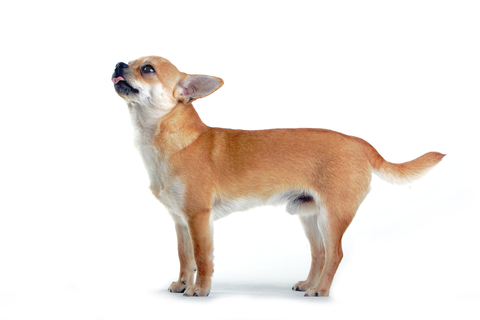
A regular sneeze is when air is forcefully exhaled through the nose, often as a single event but sometimes as several sneezes in rapid succession. What in the world though is reverse sneezing in dogs? It is when air is repeatedly and forcefully inhaled through the nose, resulting in a snort that can look and sound alarming.
What Causes Reverse Sneezing in Dogs?
A tickle at the back of your dog’s throat initiates a reverse sneeze, much like the tickle inside your or your dog’s nose that initiates a regular sneeze. This tickle causes a muscle spasm in your dog’s throat. The muscle spasm causes an involuntary rapid inhalation of air. The opening of your dog’s trachea (windpipe) becomes narrowed and your dog will extend his or her neck to expand the airway. Your dog will make snorting sounds each time he or she inhales and may swallow hard or gasp for air. This spasm can continue for 30 to 60 seconds.
The most common causes of reverse sneezing are inhaled irritants, such as pollen, perfumes, and cleaning products (especially ones with a strong odor). Certain viruses, upper respiratory infections, or post-nasal drip can also cause reverse sneezing in dogs. Pulling hard on a leash or foreign material in the throat can initiate a reverse sneeze. Rarely, nasal mites or polyps are the inciting cause.
Is Reverse Sneezing in Dogs Dangerous?
Although it looks and sounds horrible, an episode of reverse sneezing is no worse than sneezing out through your nose several times in a row. Reverse sneezes will stop and do not cause any overt stress or harm to your dog. Most cases of reverse sneezing do not require any immediate medical intervention and resolve quickly on their own – but there are exceptions. Have your dog evaluated by her veterinarian if she has repeated episodes of reverse sneezing.
When To Worry About a Dog’s Reverse Sneezing
Brachycephalic dogs (like Boxers, Pugs, Shih Tzu’s and Bulldogs) are more prone to episodes of reverse sneezing because of a condition called an elongated soft palate. The soft palate is an extension of the hard palate, or roof of the mouth. Some brachycephalic dogs have a soft palate that is longer than usual. When these dogs reverse sneeze, the abnormal air flow tends to suck the soft palate over the opening of the trachea, further occluding the flow of air. These dogs also tend to snort when excited, snore when sleeping, and have overall noisier breathing than non-brachycephalic dogs. An elongated soft palate is one aspect of brachycephalic airway syndrome. Talk to your veterinarian about diagnosis and management (surgical and medical) of brachycephalic airway syndrome if you have one of these breeds of dogs with these signs.
Reverse sneezing is most often associated with a snorting sound. Small dogs who have an episode of making a repeated honking sound, especially after excitement or drinking water, may have collapsing trachea. Large breed dogs that have an episode of making repeated goose-honking sounds with or without collapse or difficulty breathing may have laryngeal paralysis. These dogs should be evaluated by a veterinarian.
How to Help a Dog Reverse Sneezing
You can help your dog by talking to her softly and keeping her calm. Gently massaging your dog’s neck can help to stop the muscle spasm. Sometimes blowing puffs of air at your dog’s nose will stop the reverse sneeze.





Years ago my dog developed a reverse sneeze. The sneezing lasted months with increasing episodes.The vet first thought it was nasal mites but sadly it turned out he had nasal cancer. So sometimes it can be from a serious condition.